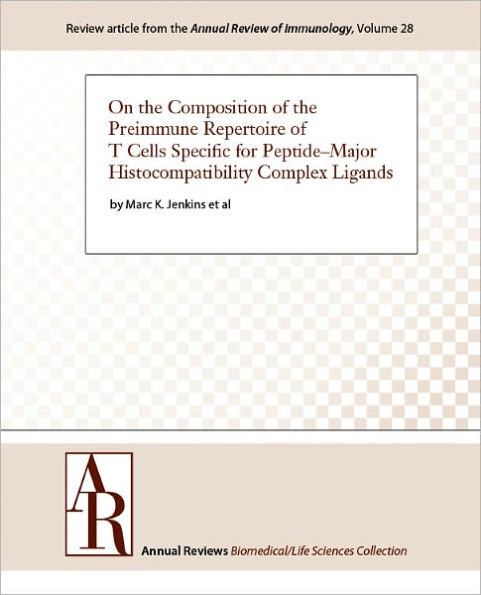On the Composition of the Preimmune Repertoire of T Cells Specific for Peptide-Major Histocompatibility Complex Ligands
Millions of T cells are produced in the thymus, each expressing a unique α/β T cell receptor (TCR) capable of binding to a foreign peptide in the binding groove of a host major histocompatibility complex (MHC) molecule. T cell–mediated immunity to infection is due to the proliferation and differentiation of rare clones in the preimmune repertoire that by chance express TCRs specific for peptide-MHC (pMHC) ligands derived from the microorganism. Here we review recent findings that have altered our understanding of how the preimmune repertoire is established. Recent structural studies indicate that a germline-encoded tendency of TCRs to bind MHC molecules contributes to the MHC bias of T cell repertoires. It has also become clear that the preimmune repertoire contains functionally heterogeneous subsets including recent thymic emigrants, mature naive phenotype cells, memory phenotype cells, and natural regulatory T cells. In addition, sensitive new detection methods have revealed that the repertoire of naive phenotype T cells consists of distinct pMHC-specific populations that consistently vary in size in different individuals. The implications of these new findings for the clonal selection theory, self-tolerance, and immunodominance are discussed.
1107220376
On the Composition of the Preimmune Repertoire of T Cells Specific for Peptide-Major Histocompatibility Complex Ligands
Millions of T cells are produced in the thymus, each expressing a unique α/β T cell receptor (TCR) capable of binding to a foreign peptide in the binding groove of a host major histocompatibility complex (MHC) molecule. T cell–mediated immunity to infection is due to the proliferation and differentiation of rare clones in the preimmune repertoire that by chance express TCRs specific for peptide-MHC (pMHC) ligands derived from the microorganism. Here we review recent findings that have altered our understanding of how the preimmune repertoire is established. Recent structural studies indicate that a germline-encoded tendency of TCRs to bind MHC molecules contributes to the MHC bias of T cell repertoires. It has also become clear that the preimmune repertoire contains functionally heterogeneous subsets including recent thymic emigrants, mature naive phenotype cells, memory phenotype cells, and natural regulatory T cells. In addition, sensitive new detection methods have revealed that the repertoire of naive phenotype T cells consists of distinct pMHC-specific populations that consistently vary in size in different individuals. The implications of these new findings for the clonal selection theory, self-tolerance, and immunodominance are discussed.
9.99
In Stock
5
1

On the Composition of the Preimmune Repertoire of T Cells Specific for Peptide-Major Histocompatibility Complex Ligands

On the Composition of the Preimmune Repertoire of T Cells Specific for Peptide-Major Histocompatibility Complex Ligands
eBook
$9.99
Related collections and offers
9.99
In Stock

Product Details
| BN ID: | 2940013305694 |
|---|---|
| Publisher: | Annual Reviews |
| Publication date: | 10/21/2011 |
| Series: | Annual Review of Immunology , #28 |
| Sold by: | Barnes & Noble |
| Format: | eBook |
| File size: | 6 MB |
From the B&N Reads Blog
